Let’s talk digital watches.
Imagine, if you can, a world without hate. I speak of a place where Citizen, quartz, and digital aren’t dismissed by the WIS community, but celebrated for their innovation and re-calibrating the status quo for their nonsensical complications. You no longer refer to the seventies as a “Quartz Crisis,” but “Quartz Revolution.”
Invariably, you fall into two separate camps; “Team Swiss” or “Team Japan.” Today, you could make strong arguments for either side regarding the greater influence for market control. Forty years ago however, if you needed any proof to demonstrate that the Japanese were running circles around the Swiss with innovation, I would direct you toward one of the most absurdly awesome and overlooked testaments of tech, the Citizen Ana-Digi Temp.
Short for “Analog-Digital Temperature” it is (or was) an incredible piece of hardware with the aesthetic spirit animal of a DMC DeLorean. For anyone who appreciates horology in its purest form (let’s call it “pursuing the advancement of time-telling instruments”), it deserves discussion… but more on this in a moment. To fully appreciate its achievement, we first need to take a step back and understand the context of evolution until its release in 1981.
Origin Story
Consider this: By the time the Swiss had recovered the situational awareness to bite the bullet and pursue mainstreaming digital quartz options, the Japanese were already getting ready to stuff thermometers, TV’s, and video games into their time pieces. Much of the irony lied in the fact that it was the Swiss that had spearheaded much of the R&D for Liquid Crystal Displays and handed it to Asian markets on a silver platter.
Brokering the relationship was Brown, Boveri & Cie (BBC), a Swiss electrical engineering firm established in the late 1800’s, widely known for supplying international markets with semi-conductor parts. By the time Bulova’s tuning fork tech was in full swing in 1969, BBC was starting to pivot toward the next steps in innovation with electronic displays powered by quartz movement. Their first 8-digit Twisted Nematic LCD prototype was revealed in 1973, a technological improvement over Seiko’s unstable first attempts, where it became the gold standard in digital displays for the following four decades.
After feuding back and forth since ‘69, Omega with their desperate attempts of creating a hyper-accurate quartz, and the Japanese expanding on, well, literally everything else… we saw an explosion of shift with Citizen pushing boundaries.
One small problem stood in the way of BBC’s continued research for mass-production. As a nation of traditionalists, the Swiss did not take to the industrialization that favored the LCD development—the labor required was just too expensive. This queued the reception of Casio Computer Co., a developing electronics firm backed by a Keiretsu, a Japanese term for enterprising corporations with ties to banks deliberately structured for seeking financial trade deals.
The partnership delivered to the world the Casiotron in 1974, and with it, the economic approach to locate its manufacturing in Hong Kong overseen by BBC’s quality control. Let that sink in for a moment… the LCD screen, one of the largest contributing factors to the quartz rise, was a direct result of Swiss thinking it made more sense to sell their tech to competitors than to commercialize it themselves.
After feuding back and forth since ‘69, Omega with their desperate attempts of creating a hyper-accurate quartz, and the Japanese expanding on, well, literally everything else… we saw an explosion of shift with Citizen pushing boundaries. First in 1975, with it’s creation of the most accurate watch in world, the Crystron Mega.
Then, in 1976, they struck gold with the introduction of the first solar analog watch. In 1978, records were set for producing the world’s slimmest watch under 1mm. One year later, Citizen delivered the smallest movement available. With this in mind, it might have seemed only natural that the market would be ready for a watch that had multiple analog sub-dials, digital displays, alarms, and even thermometers for good measure. With that, the Ana-Digi Temp was born.
The Brain
The research and development behind the capabilities were as much a challenge as the name would suggest; initial investment to produce the model in 1980 was about a million dollars ($3.1 million today). This movement invented was referred to as the Citizen caliber 8980 and it might as well have been the Apple watch of its time.
Within the single introduction of this timepiece, there came several other technological “firsts.” Among them, it boasted a fully automatic calendar identifying the unique days and conditional changes up until the year 2019 (pop-culture of the 80’s suggested robots would have taken over by then). Additionally, it was the first to measure heat (although the watch needed to be off the wrist for accuracy). Never before did a watch have a two programmable analog watches (the first for hours and minutes, the second for cycling through options of seconds, alarm, dual time, or stop watch).
One handy feature in particular was “Dual Time,” which for all intends and purposes, acted as the GMT feature. While the top left clock could be your time set to 6:35am in San Francisco (indicated with a traditional analog hour and minute hand), the top right analog clock had a single regulator-style hand for tracking elsewhere… let’s say New York. The specifics of this time was reinforced with the digital display below so you knew exactly when then the stock market opens its doors for trading at 9:30am. Looking to build in five minutes of cushion? Prefer military time? Both are easily manageable.
The Ana Digi-Temp featured an integrated circuit capable of measuring and storing four data fields: Temperature (thermometer readings in Fahrenheit or Celsius), time (through stopwatch use or lap times and documenting times at which temperature was measured), alarms, and analog hand position (for reset with synchronization).
The Case
In its heyday the Ana-Digi Temp came in a large variety of styles and colors that would make easy prey of a “completionist.” There was black if you were a fan of the G-shock appearance and gold-tone if you were feeling frisky. With later generations, I feel Citizen sort of lost its grasp on the design aesthetics and by result, you’ll likely come across several models that appear “inbred.” For my money, you can’t beat the original stainless steel on black with silver sub-dials. For the purpose of a more targeted discussion, the JG200-59f will by my focus.
The Ana-Digi Temp is a watch of the eighties through and through. With the case’s silver “boxy” shape and angular bisection of displays, my mind gravitates toward what a Bell & Ross might’ve look like if it were inspired by a Tie Fighter cockpit. Smart watches aside, one of the tougher issues tech-driven tool watches faced were how to achieve the balance for appearance if form followed function. For considerations like the Breitling Navitimer or Citizen Nighthawk, the resulting appearance became the look later celebrated. This particular Ana-Digi is no exception and gets to lay claim to the “no-nonsense” approach.
The stainless steel case sides and bezel are accented with polished surfaces, while the lower portion of the front is a brushed finish texture. At its base to the left, Citizen made little attempt to disguise the alarm speaker, as it’s prominently balanced beside the model name plate, “ANA-DIGI TEMP.”
Without the pushers, the case measures 31.5mm across, 36.5mm vertically, 40mm lug to lug, and 8.4mm in thickness… similar in size to a Casio World Time A500W. The Ana-Digi wears slightly larger due to the near total absence of a bezel and pseudo-square shape.
The Dial
A more apt term for the dial would probably be “dash display,” where analog sub-dials and LCD screens compartmentalize separate instruments. It does so with the utmost respect to balance, both in shape and contrast of color use. Crisp, white font offers high contrast against the black backdrop and speaks to the significance behind various digits or the four pusher capabilities. Alternately, the lesser relevant text mirrors the color tone of the darker LCD screen and becomes ambiguous against the matte negative space. I’ve got to hand it to Citizen for their modesty, as among these murky words is their very own name.
On a historical note, the inclusion of both an LCD screen and Analog display was an interesting design element for its time; it spoke to a subliminal marketing strategy. With rare exceptions to mechanical digital watches, the majority of the target audience was largely unfamiliar with digital layouts and the liquid crystal technology. Because some companies believed there was public distrust for its reliability, they figured an approach to combine the two would act as a “gateway drug” toward greater LCD acceptance.
The Hands
With as tiny as they are, the hands would be easy to neglect a mention. However it’s worth noting that they’re unique in shape and style. On the left register, they’re matte black and almost needle-nosed at the tips with slivers of Luminova-style treatment. The right register’s “regulator-style” hand is marked with a heaver dose of paint. Both sets provide an idea of direction relative to four glowing indices every 90 degrees. Incredibly, they still retain a charge after nearly four decades. At the centers of each register, the base of the hands are highly polished and “pop” as reflective accents against matte brushed steel sub-dials. They compliment the silver screws that presumably fasten the corners of the dash display to the movement.
The Bracelet
By contrast, the matte-brushed steel bracelet is much simpler than the watch face. The division of horizontally-stacked imagery across the display become minimalist plates as they transition at the lugs. Because the lugs are hidden, the bracelet appears to integrate seamlessly at the bottom of the case, a thoughtful continuation of contoured edging and finish. It would be difficult to imagine any other pairing of a bracelet.
The clasp is double folding, and infinitely adjustable for the length of the lower strap (100mm). My only criticism is the style of end links that were designed to flare out the bracelet. They’re pliable and prone to bending under minor pressure (the tool watch argument ends here).
Closing Thoughts
Given all of its technological advancements, how did the Ana-Digi Temp go overlooked? Did it ever have a cult following?
For starters, Citizen never released the watch for North American markets… although I couldn’t Sherlock the reasons as to why. Perhaps the 1980’s was already getting saturated with all the Casios staking claim to our digital niche tastes. Or maybe it was the Ana-Digi Temp’s name that reduced the tech’s merit to simple novelty, and therefore dismissed; “Why would I need a watch to tell me the temperature?’ It may not have been the Smell-o-vision of horology, but there’s no mistaking it for “sexy.”
Likely, Citizen realized that with the Eco-Drive discovery of 1976 their future was set. From a marketing standpoint, any other efforts could have been a distraction from establishing this new identity synonymous with “solar.”
In any case, the Ana-Digi Temp is alive and well today in what appears to be a resurrection of OG-style throwbacks—all of which could be easily obtained as “new” from JDM eBay sellers for under $300 bucks. Obviously, they’re not for everybody. But for those who appreciate funky design history and vintage tech, my advice is, “Beat the hipsters to the punch.”

Damon is based out of the Bay Area, where he’s a black sheep among Apple Watch loyalists. Having served as a Combat Engineer with the USMC, he believes a true field watch’s success is measured by how closely it compares to a “G-Shock.” Nonsensically, a background in design has guided his preference toward higher craft, as he struggles to become the lifestyle his watch tastes more closely reflect.
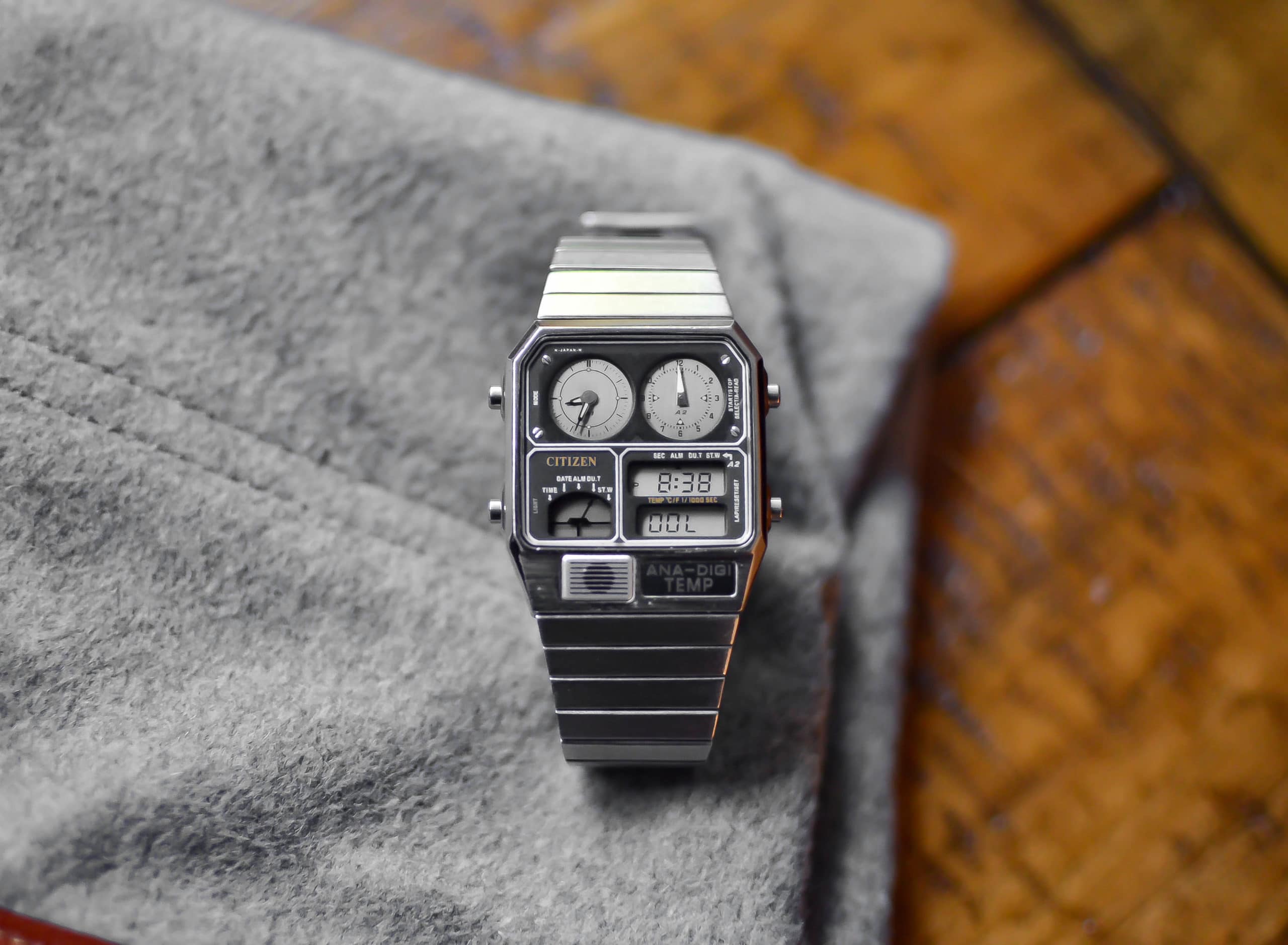
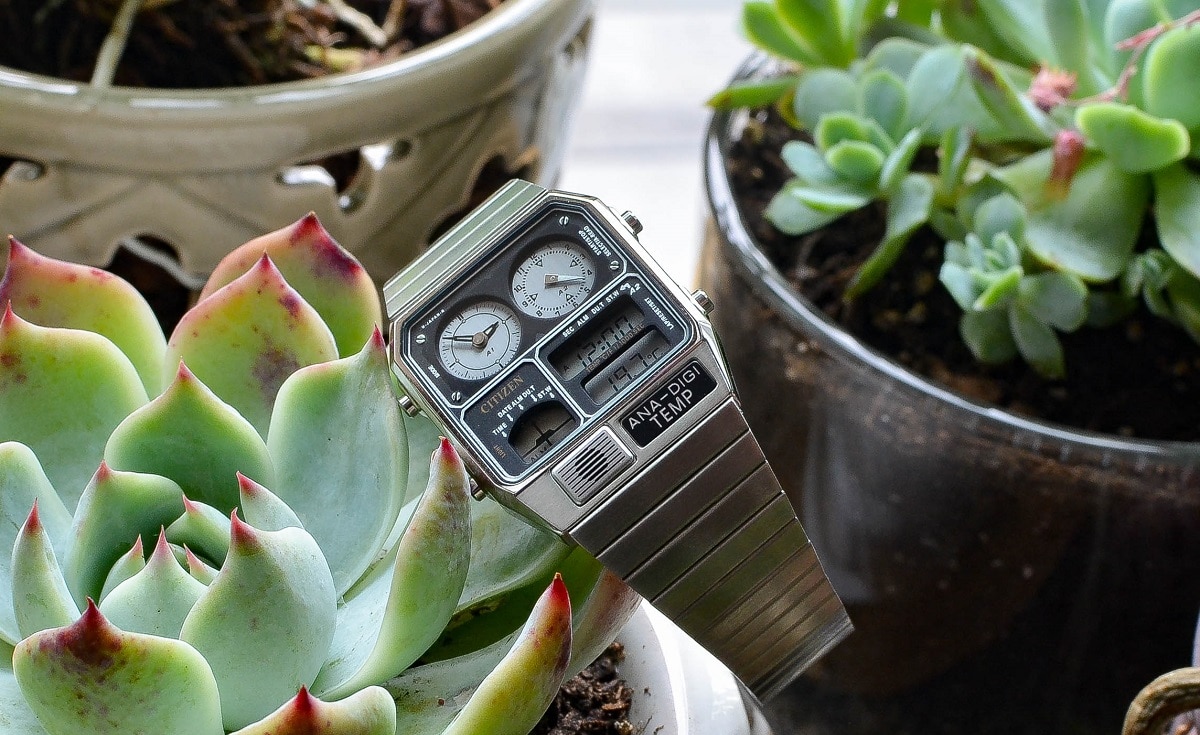
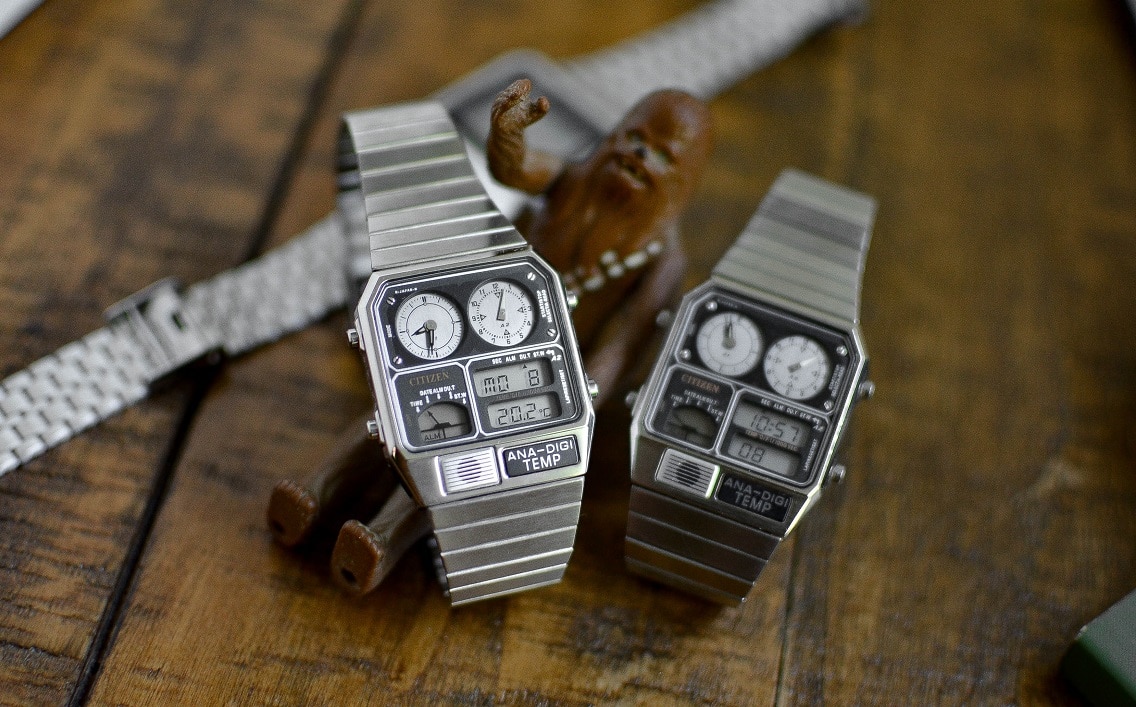
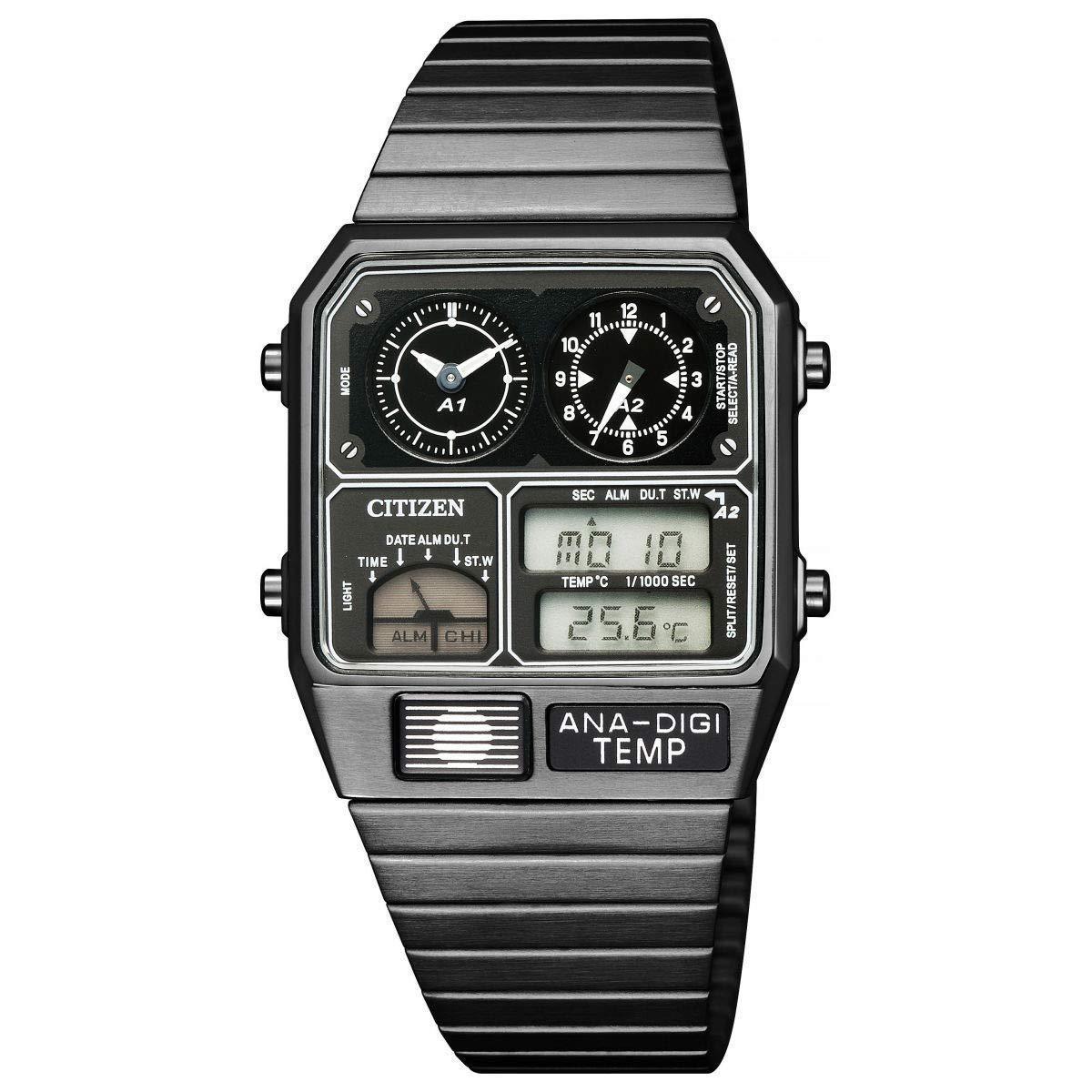
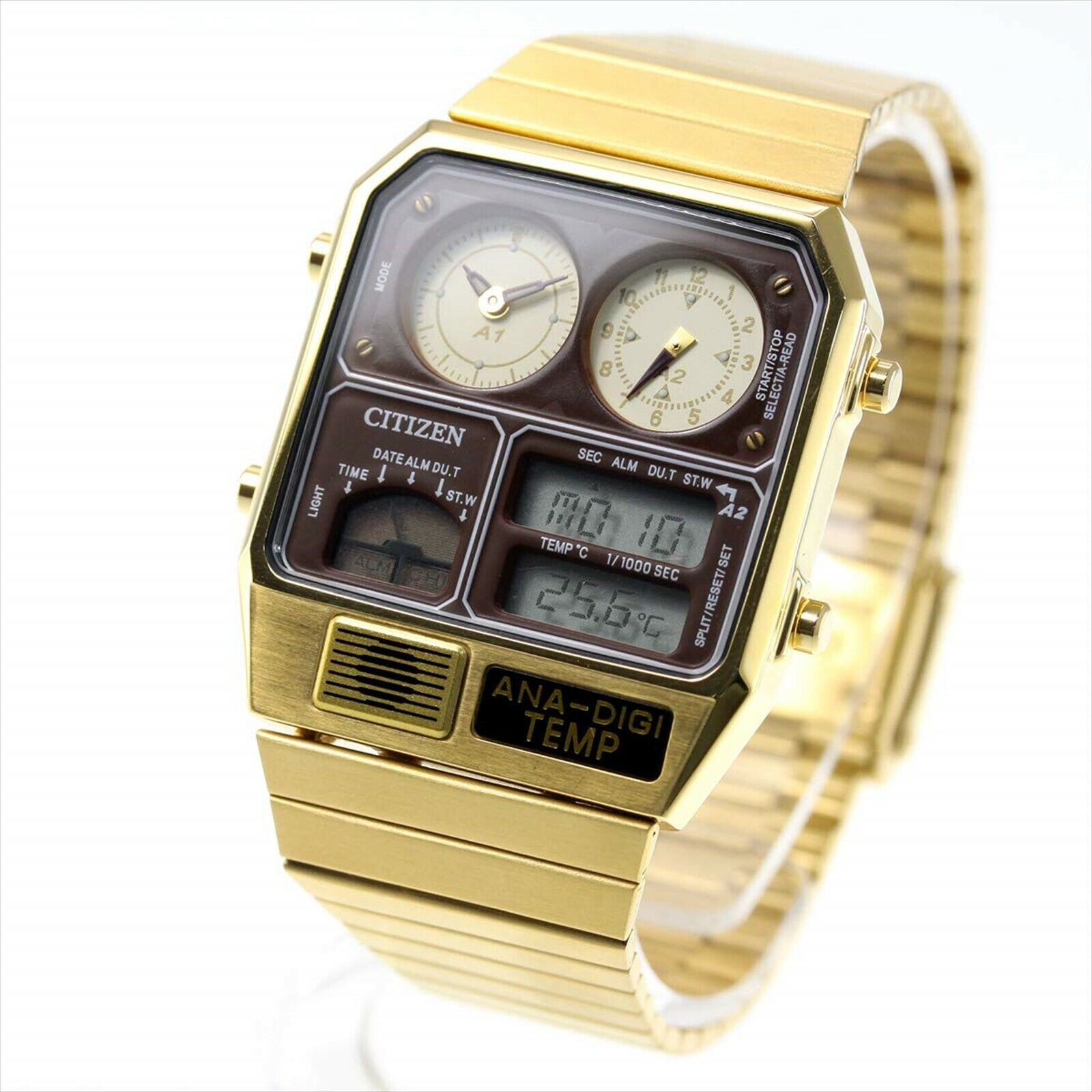
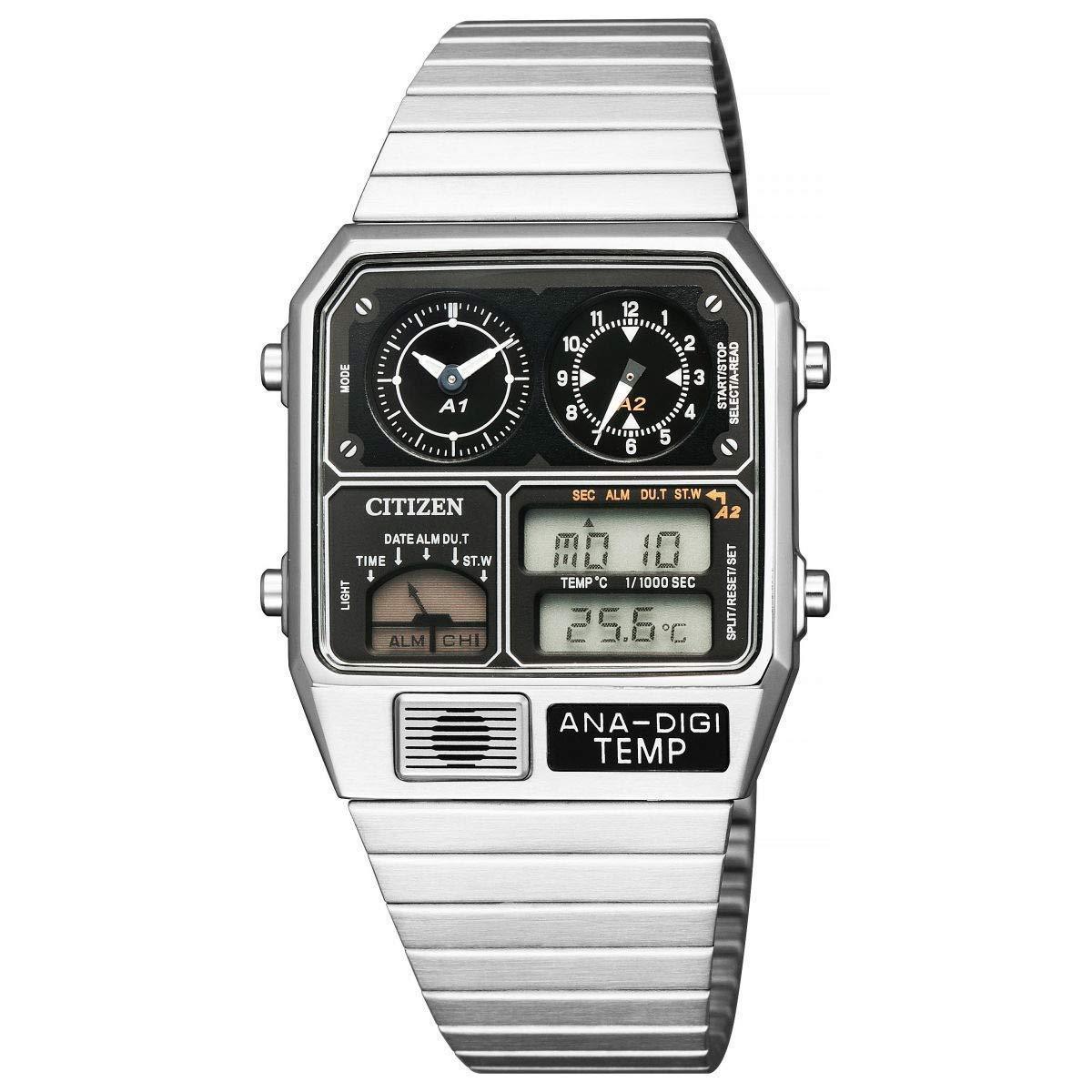
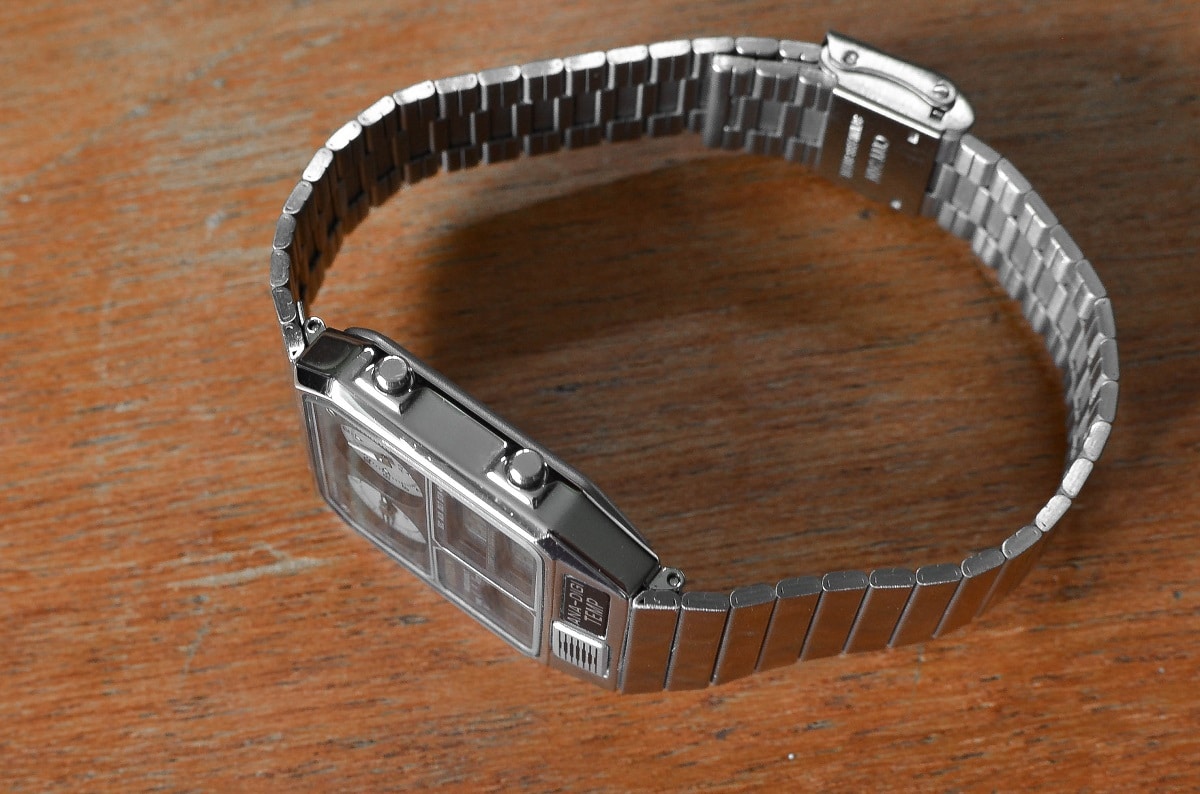
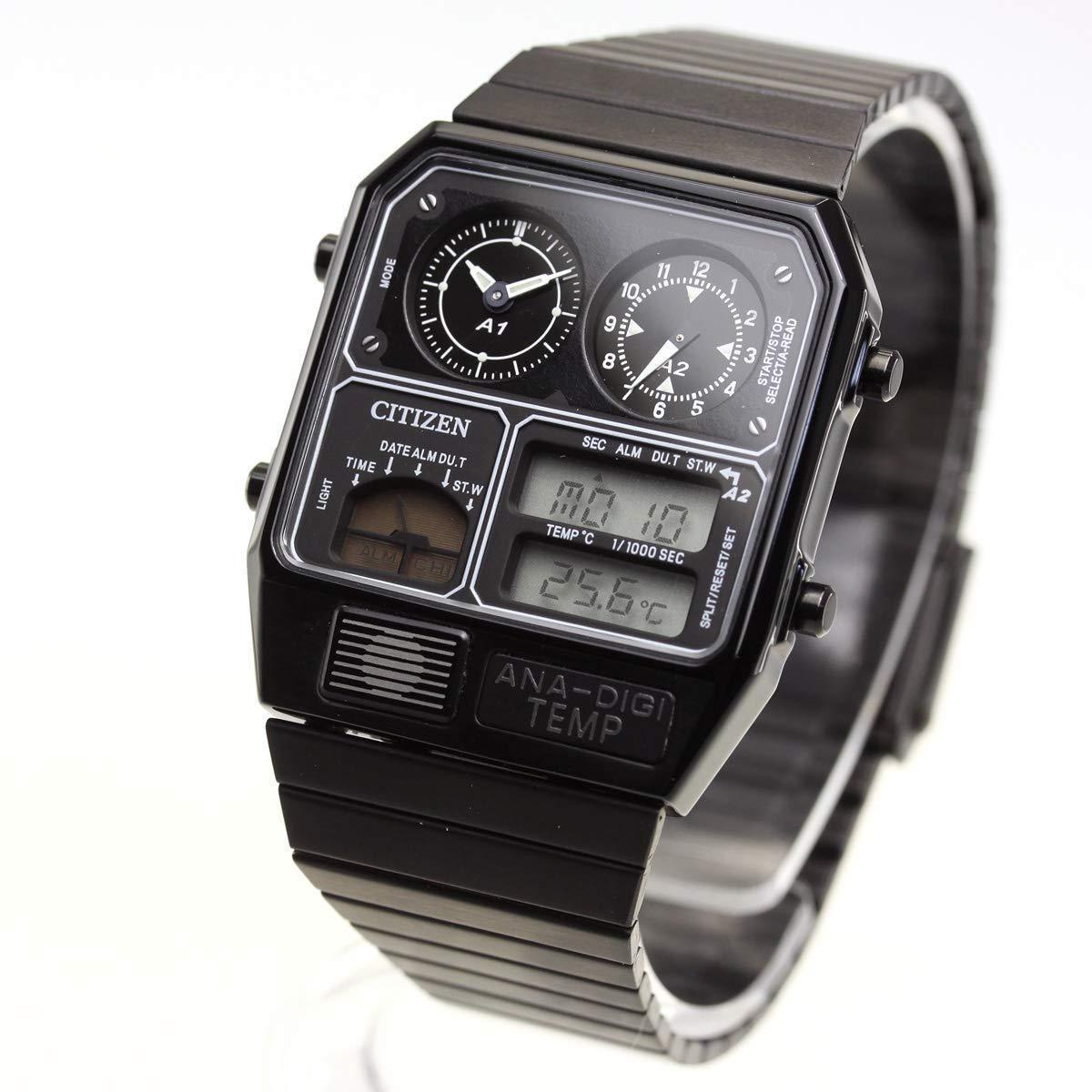
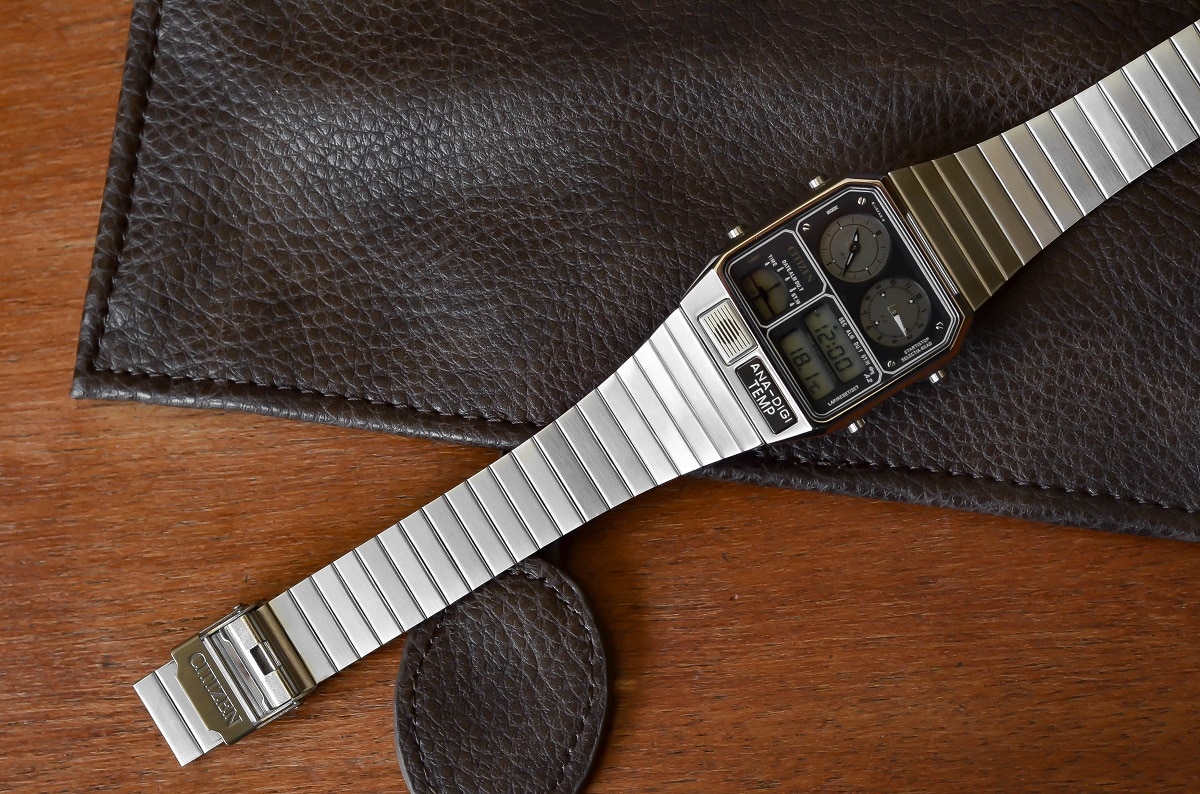
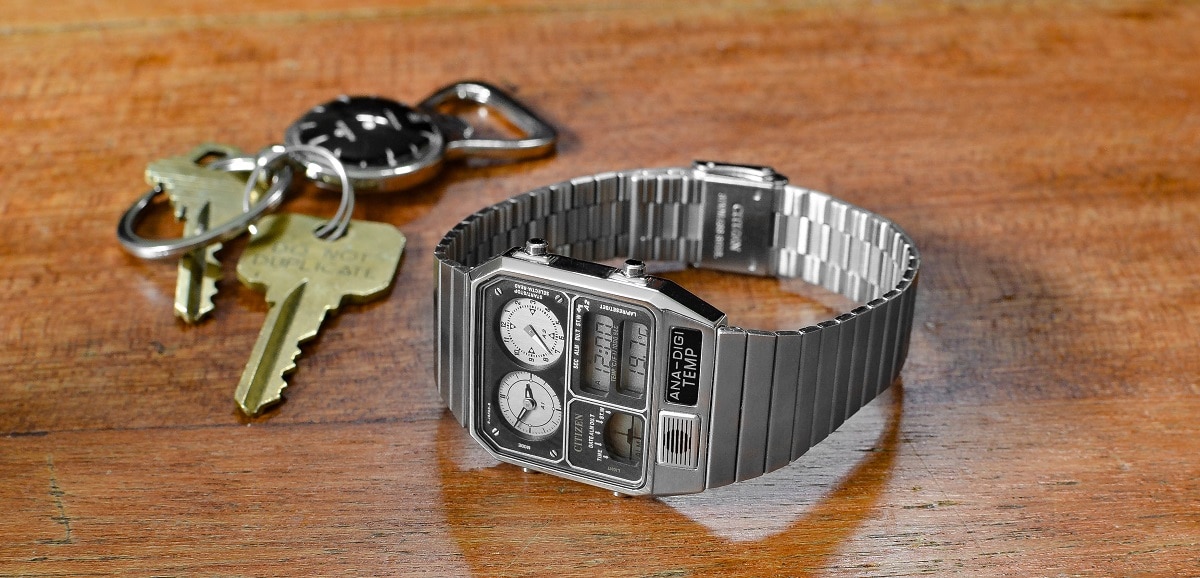
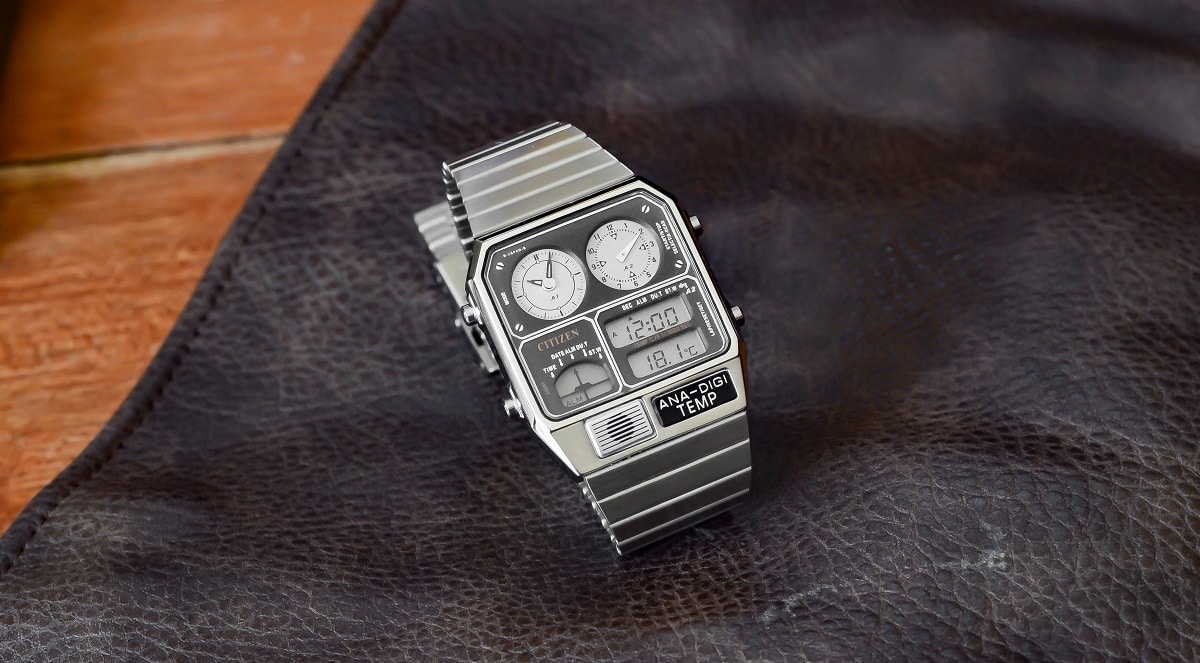
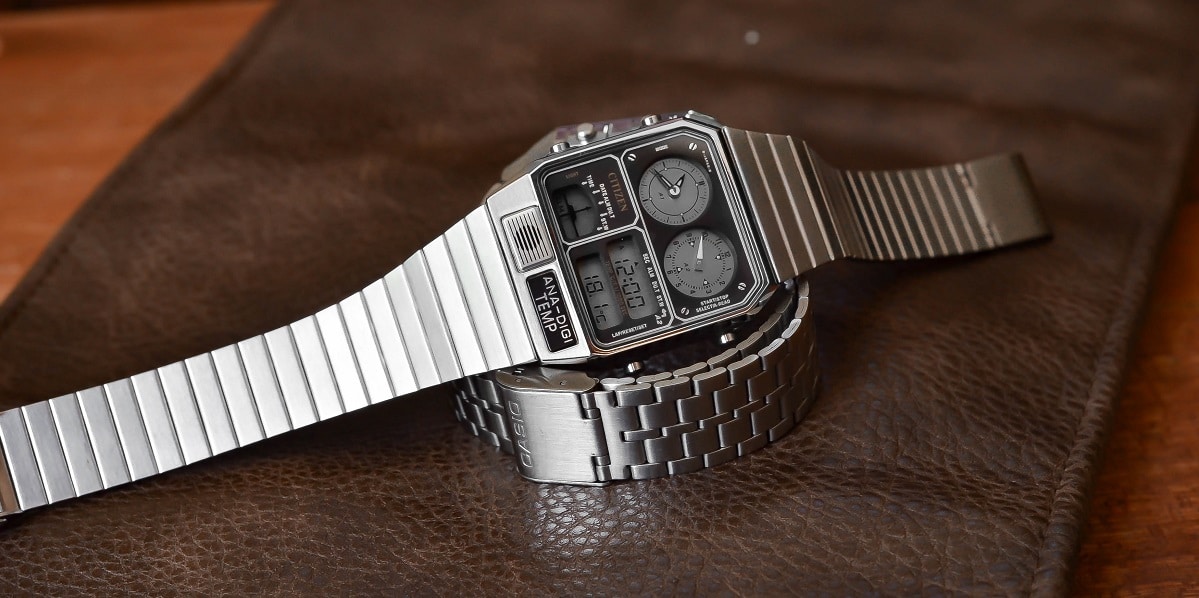
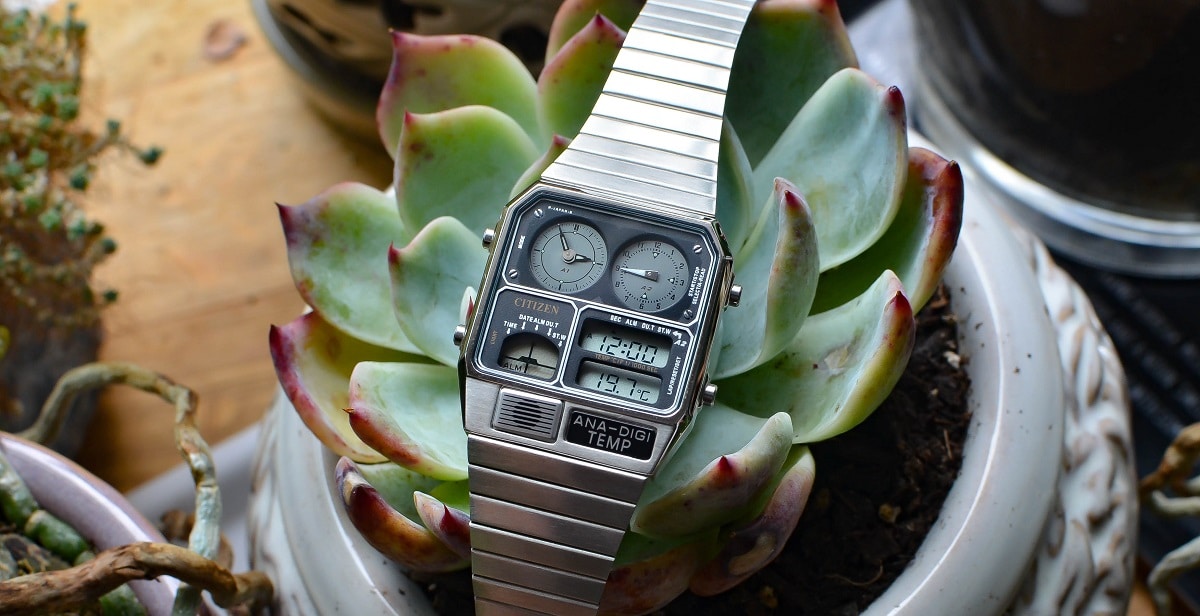
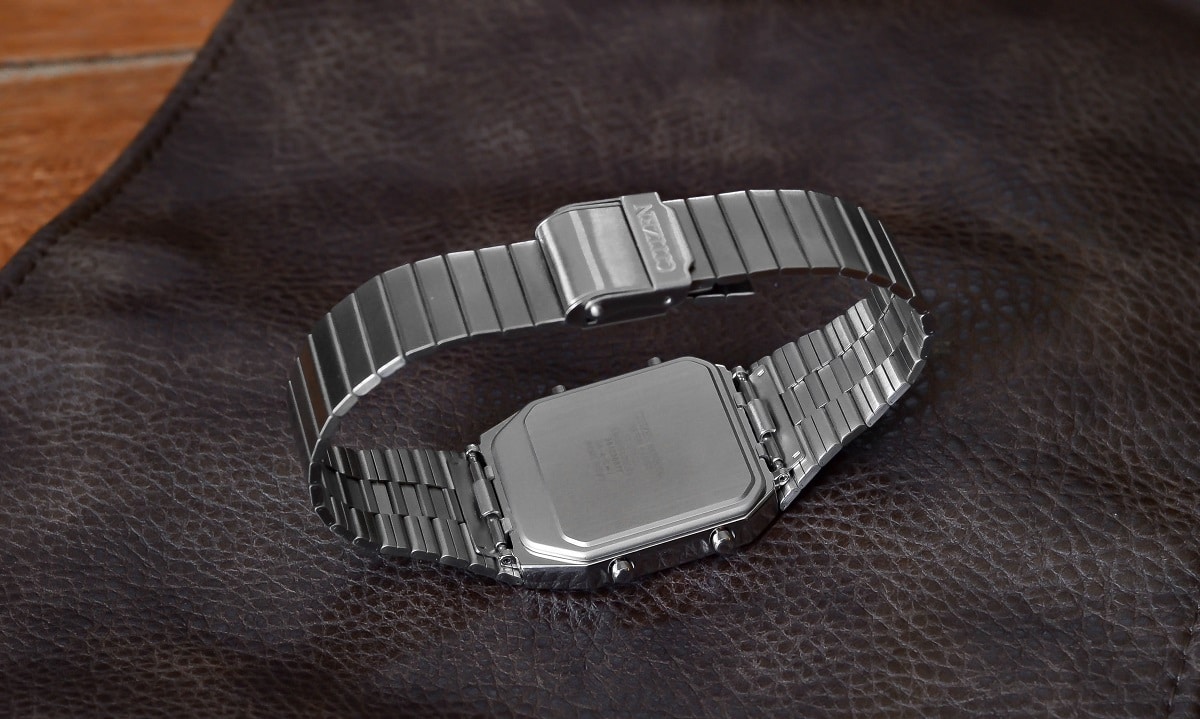
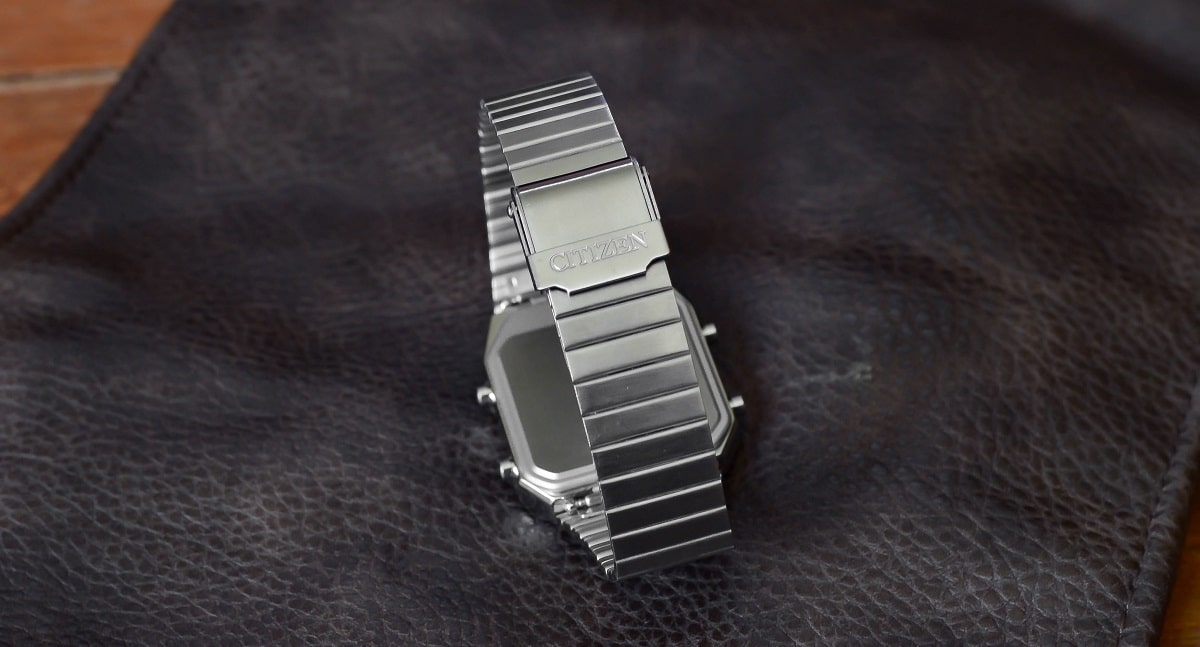
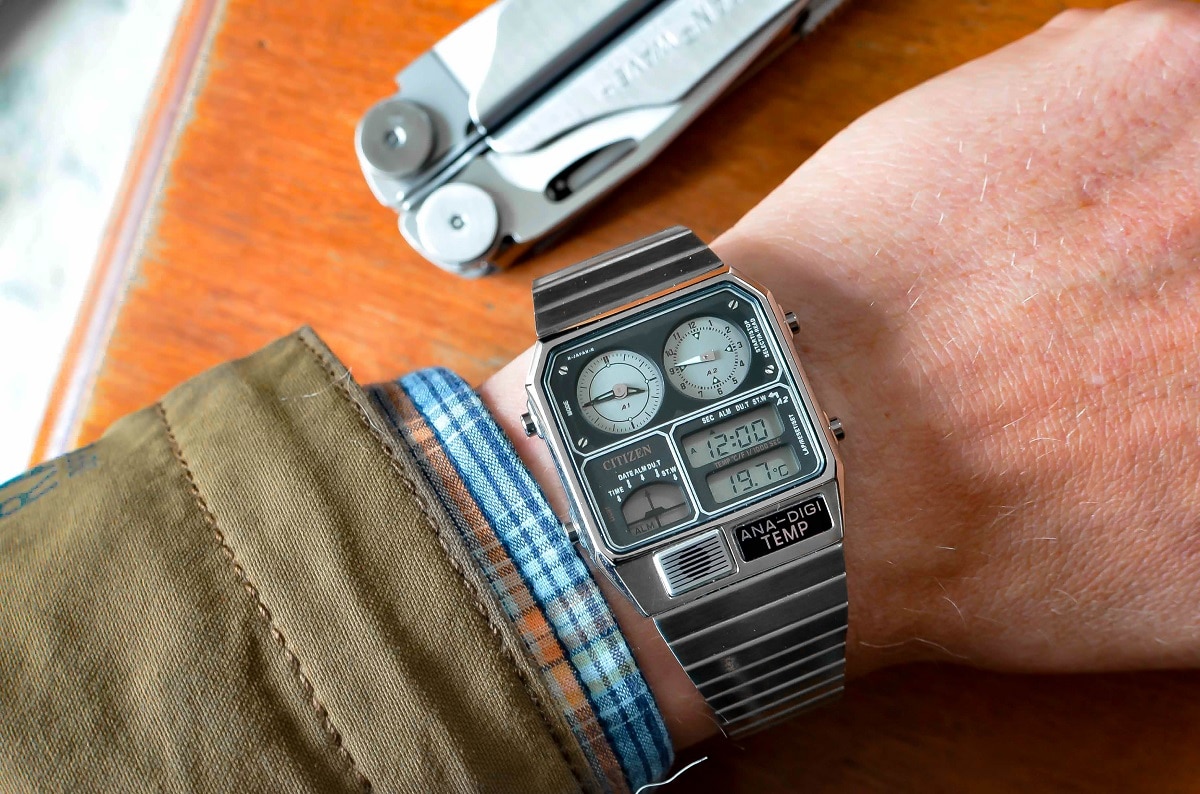
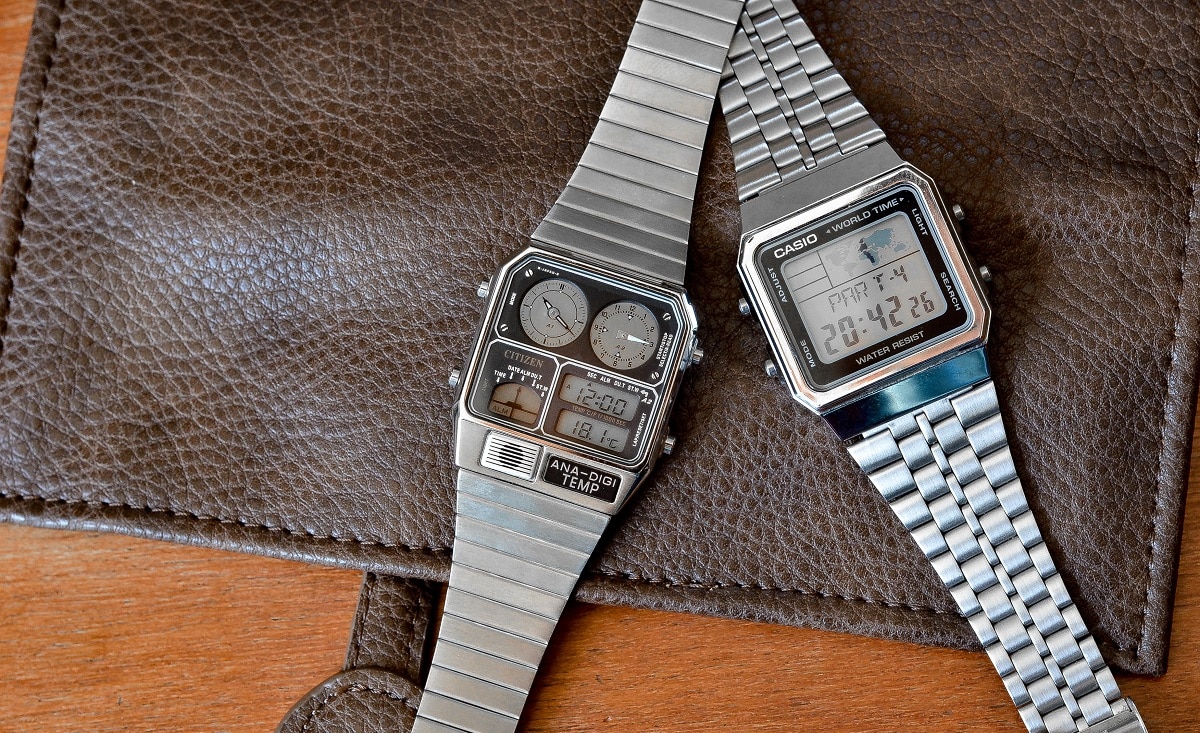
Great review! Super interesting piece and love the background history.
These are super funky. The 80s are hot in pop culture as a simpler time. The watches look even better now than back then because we no longer pair them with fanny packs and giant shoulder pads. A very well written review. Thanks for the nostalgia.
Very fascinating read. Perfectly presented with amazingly beautiful photos.
I came across this article after adding this model to my collection. Fortunately in excellent condition. I now have 10 legendary digital clocks from Citizen. D060,D120, 8950 ….
Extraordinary thanks to the author of this page.
Thanks! Thanks for this time travel. Together with Marty and the Doc In DMC
I was given one of these. It’s a bit different than all the examples on this page. It lacks the ANI-DIGI TEMP label and the bracelet has two rows of engraved black dots.
Now, what do I need to get it going? Just a battery replacement? I’ve yet to find any directions how to set it correctly.
The “ADT” had a bunch of face-lift over the years but I’m pretty sure they all operate the same.
More than likely, it just needs a new battery. It all depends on how long the last battery was sitting in there and what the likelihood was of an acid leak.
If you can’t set it, shoot me a message and we’ll figure
something out.
The temperature readings were worthless. Your body heat contaminated the readings. If you wanted an accurate reading you had to take it off and leave it for ten minutes. It served no actual purpose.
Besides pushing the envelope of technological innovation, I agree 100%.
I got one of these (with a somewhat different design though) in the mid 80s, and was wearing it daily unitl less than 10 years ago, when I exchanged it for a smart watch. Now it is sitting on my nightstand, still working flawlessly. I’ve always loved its many cool features (let’s measure the temperature!), and above all, that neat techy design… hey, I even created an Ana-Digi-Temp watchface for my first Pebble!
Btw, that thing on the bottom left isn’t the alarm speaker, it’s the temperature sensor.
How much did you pay for it in the 1980s?
Excellent review. My mother bought me the stainless steel 8988 in the 80s for £85.
It broke (all LCDs turned black) after 25 years. I bought a replacement in 2005 which I thought was exactly the same but turned out to be the 8989 model (important, read later!).
Recently the 8989 model metal strap broke – the small lug on the case where the strap pin goes in to actually broke away from the main steel body – disaster as the watch is still perfectly functional. So brainwave – I’ll take the whole movement (8988) out of the broken steel body and put it into the 8988 case. Guess what – they’re slightly different in size and the 8989 will not fit properly into the 8988 watch case! So if anyone has a spare 8989 steel body and strap and who needs an 8988 case with strap please contact me in Sheffield, UK please.
An excellent Ryder to this – I’ve just got a fully working 8989 Ana Digi Temp in a silicon white case.
I love this watch. It just oozes pure 80s. I would have sold my soul to Satan as a kid to have this watch. Luckily that’s no longer necessary, I was able to get a reproduction for AU$350.00. I wonder what it sold for originally? Does anyone know?
I bought mine in 1984 for about 430 or 450 Dutch guilders, when you take inflation into account you would be paying about 485 euro’s today.It was expensive in those days. I was 16 at the time my mom bought it and I still have it. With the space age watch Citizen ana-digi you were definitely the cool kid on the block. 80’s was a wonderful tome for me.Many wanted to know what the arrows in the small window down left meant. It’s a sweet memory since my mom passed away in 2006 to cherish the watch, it has some bruises and scratches just like I do.
I love the retro look of this watch. It seems “cooler” today than it may have been received when it was first launched.
I agree with Damon when he said “For my money, you can’t beat the original stainless steel on black with silver sub-dials.” This is my favorite variation of the watch. But this combination is difficult to find. May I ask if anyone happens to know the specific model number black dial with grey subdials?
i still have one of these watches which i bought in the 80’s
If i remember correctly i paid about £100 for it and used it as a daily for a good few years before it got relegated to the back of a draw which unfortunately it still lives
I don’t know how significant the model numbers are but mine is 8982
there is mention of 8988 and 8989 in an earlier post maybe somebody knows the difference in model numbers ?
I like this and other vintage watches really. Theese watches are another life. I feel it I want and i will buy.
I have a working 8989 model encased in brown and white SILICONE as is the strap which has cracked a broken in 3 different places. Does anyone know if I can get a replacement strap anywhere please?
Dennis- Sheffield UK
I bought one of these from the military exchange, which carried items that weren’t available in the mainland US. I also picked up a Sony Boodo Khan. I enjoyed these immensely, only discovering later how rare these were. I too the Boodo Khan in to a Sony-authorized repair shop, and I was surprised to hear no one in the shop had actually seen one. Caused quite a stir.
The Ani-Digi never went in for repairs, but it is nice to see this watch appreciated. I’ll have to see if I can get it going again.